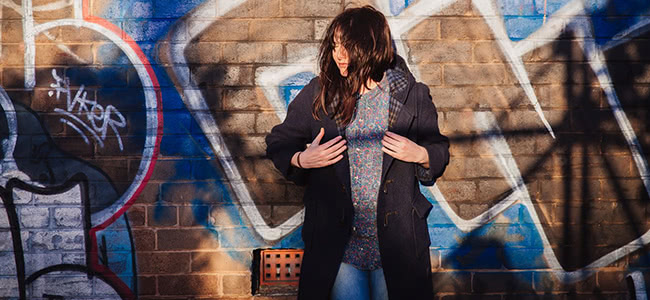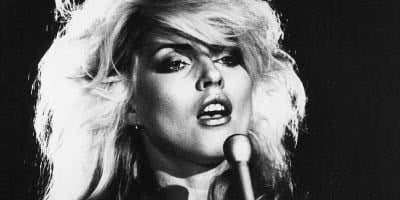For someone who likes repetition, Lucinda Hearn is doing a mighty fine job of keeping fans on their toes. Self-describedly concerned with “small movements and repeating patterns – those moments where the mundane becomes sublime”, her music as Fieldings is fresh and original.
Formerly The Understudy, Fieldings came to life in 2014 with electro/tweet performance called Feed, done as part of Art Month 2014, and an EP released in June Wild Release, Vol I. In September, she released her second EP and was tapped to play BIGSOUND alongside D.D. Dumbo, DMAs, and more.
To find out how Hearn manages to remain new while “repeating” herself (or as she tells us, repeating a fake saxophone over and over), we spoke to her ahead of her support slot for Alyx Dennison’s album launch in Sydney on Thursday, 4th June at Newtown Social Club.
Back To Basics
I like the idea that I would have to be forced into a tour van, because you know, usually I travel by jet. Am I by myself in this scenario? If I’m by myself I would take my Electro-harmonix 2880, Memory Boy and my guitar, which is an unruly adolescent I once named ‘Clarissa Explains It All’ (Gretsch 5120).
Early Beginnings
My first live rig was a Garrison semi-acoustic with no tuning pedal. I was called the bastard child of Ani DiFranco once. And my first song I wrote when I was 12 or so. It was called ‘Fishbowl’. I’m pretty sure it had the lyrics “I’m trapped inside.”
Producing everything myself is relatively new for me. I bought a 002 and an old laptop from my buddy about two-and-half years ago and started teaching myself how to use whatever was on there. I know considerably more than I did but the song and the sounds are more interesting to me than gear or technical competence.
The Rig
I fear I’m going to be a disappointment to anyone reading this who has invested a lot of time and energy in collecting, understanding, and expertly using various different sound gear. I have a true appreciation for those people (the gear whores), but I am not one of them.
I have a 2011 MacBook Pro, a 002, an MXL condenser, and a Fat Head. Sometimes I run a Privia keyboard my grandma gave me through the Memory Boy and loop a saxophone sound into a sort of drone. I track in Garageband. I do have a very nice collection of plugins I inherited. Lots of Waves. I very much enjoy the S1 Imager.
Taking It Live
I’ve always been a major proponent of live music sounding significantly different than recorded music. We also have an unofficial no laptops, no MPCs rule in the current Fieldings live sound, so that limits the extent to which we can ape the recordings.
Edwin plays a Nord Lead form the ’90s and has spent a lots of time making really interesting sounds with it. Dave plays a Mapex kit with mallets. I run a DD7, RV5 and Marshall Bluesbreaker, and I use a Memory Boy on my vocals.
All of this sort of happened bit by bit and by accident. Just seeing what actually worked in the room as opposed to chasing recordings and being stiff about it.
Homebase
It’s changed significantly over time. Songs used to start with a turbulent emotion and a guitar, and now they start with an interesting title (hopefully) and a computer screen… for better or worse.
Live vs Electronic
Fieldings’ music is mostly sequenced. I play guitar, keys, and bass live. Vocals are live, obviously, and I capture bits of room noise to give character to a track. Otherwise, it’s me running fake flute through different pedals trying to create interesting noises without deviating too far from what has become a sort of palette.
Defining The Sound
Straight up, no. There isn’t one piece of gear that defines the Fieldings sound. What defines it is probably more a set of rules I made around creating this first set of Fieldings tracks.
I created and named a bunch of weird synths (Shaky Womp, Star Lord) with my GB flute and guitar pedal “technique” and then set a bunch of parameters around repetition and structure. Super dull to talk about out loud, but really fun for me.
Solving Problems
If I had to be honest, the S1 Imager I mentioned earlier is the biggest problem solver, but I think it’s most important to understand how sound works and the gear you use is actually doing to it. If you understand that you can do really cool stuff without really cool gear. Really cool gear helps, but it isn’t essential.
Floating The Boat
I haven’t experienced an overemphasis on gear. I think if you’re interested in sound and the aesthetics of sound, come at it in whatever way lifts your skirt. I like accidents and layers and field recordings, so I play a lot in that realm.




































